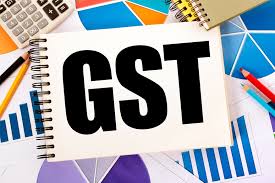Rationalise GST rate; reduce exemptions or hike rates
The GST digital compliance and tax administration framework is unprecedented in its scale and ambit, and forms the backbone for the reform. Achievements on this front are exemplary and will be emulated globally. Last year, it was visionary of the revenue secretary to push ahead with the digital agenda through the pandemic, despite protests. E-invoicing for large taxpayers having turnover above Rs 100 crore was implemented. This, coupled with a proactive use of analytics, has enabled the administration to check evasion. The collection efficiency has significantly improved. The Q4FY21 collections indicate a 15-20% growth compared with FY 19 (see graphic). Stronger collections should provide flexibility to focus on the necessary structural reforms.
In FY21, approximately `7 lakh crore (based on Union Budget RE and all states BE) excise duties and state VAT collected on commodities excluded from the GST net account for 30% of all commodity taxes and duties. A lion’s share of these collections relate to petroleum products. Further, budgeted collections of state electricity duty for FY21 is around Rs 46,184 crore (as per the RBI report on state finances—A study of Budgets 2020-21). Inclusion of these sectors within the GST net will reduce cascading impact of these taxes by tens of thousands of crores of rupees. However, the present political and economic scenario would not allow both the states and the Centre to agree over any dilution of fiscal independence, and this agenda is unlikely to be addressed.
States were guaranteed a 14% compounded annual growth of their revenues subsumed within GST for five years. Any shortfall was to be funded by the compensation cess. This year, the compensation is estimated to be around Rs 2.5 lakh crore. This guarantee ends in June 2022 and the states would want an extension of the compensation safety net for a few years more.
This revenue shortfall is primarily on account of the steep reduction of tax rates during GST implementation. Against a planned revenue neutral rate of 15.5%, the actual average GST rate is around 11.8%. Rate rationalisation, either by reducing the number of exemptions or by increasing GST rates, could be considered.
The recent integration and tightening of the compliance framework definitely reduced evasion. At present, non-filing of returns precludes a taxpayer from receiving or despatching goods, thereby forcing closure of business operations. This is too harsh. Decoupling payment of taxes from filing of returns is desirable as this will enhance the quality of compliance and enable businesses to revive and recover. Evasion concerns should be addressed by better use of analytics.
The impending states’ revenue crisis is likely to pressurise tax administrations to take on aggressive tax collection targets triggering combative and high-pitched assessments. Indian GST, being a new law with several complexities, exacerbates the problem. Unless pragmatic steps are taken to reduce disputes, the ensuing deluge of litigation will breed massive uncertainty for businesses and choke the already burdened judicial infrastructure for the foreseeable future. The steps could include issuing clarifications, rationalising legislation to address ambiguities in the law as also notifying schemes allowing people to resolve or compound disputes or non-compliances. Further, active focus should be given to decriminalisation of offences under the law.
As GST enters its fifth year, tremendous work has been done to get its physical bearings in place. Revenues and collection efficiencies have improved and stabilised. Next year, the agenda should ideally aim at building on this strong foundation and work on imbibing the right values in GST. This is the time to ensure that the law doesn’t become troublesome but contributes to the economic well-being of the society and country at large.
Source:https://www.financialexpress.com/opinion/rationalise-gst-rate-reduce-exemptions-or-hike-rates/2280872/
Download our App to get knowledge updates::: https://play.google.com/store/apps/details?id=com.app.gstmitra
Join Our Telegram Channel for more updates:https://t.me/praveengst



Comments
Post a Comment